168 vs 194 Bulbs: Key Differences & How to Choose the Right One
Shopping for replacement bulbs for your car’s interior lights and feeling stumped by the numbers? You’re not alone. Many drivers wonder what the difference is between 168 and 194 bulbs, and what a T10 even means.
In this quick guide, we’ll explain how 168 and 194 bulbs compare, what T10 really refers to, and how to make sure you’re getting the right bulb for your vehicle.
Quick Summary:
168 vs. 194: Both have the same base, but the 168 uses more power and is slightly brighter.
T10: This is a size classification. It stands for a tubular bulb that’s 10 eighths of an inch in diameter (about 10mm).
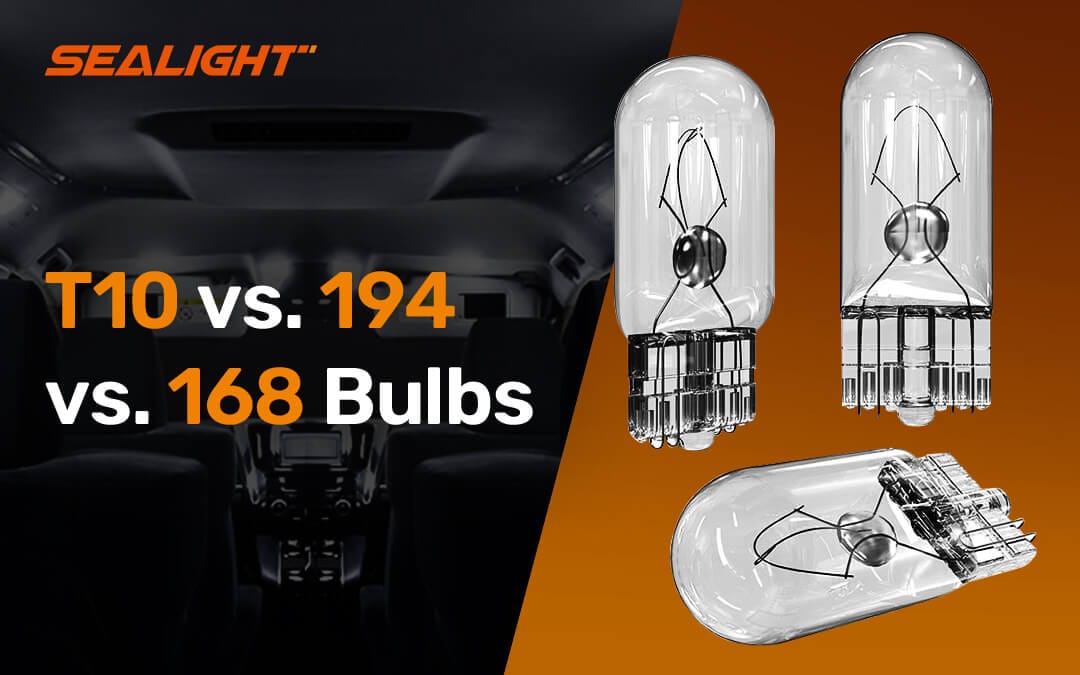
What Are the Differences and Similarities between 168 vs 194?
194 and 168 bulbs are all wedge-base bulbs that are commonly used for interior lighting in vehicles. They all utilize a wedge base, specifically the W2.1x9.5d, that snugly fits into their sockets. Their primary difference lies in the wattage. The 194 bulb uses 3.8W, and the 168 bulb takes up 4.9W.
Below are more details:
Base:
All three bulbs utilize the same wedge base to fit into their sockets. The base has dimensions of W2.1mm x 9.5mm. This standardized base allows the bulbs to be interchanged in many applications.
Wattage:
194 bulbs are usually 3.8 watts. 168 bulbs tend to be 4.9 watts. The higher the wattage, the brighter the bulb.
That extra wattage gives the 168 a bit more brightness. It’s rated around 3 candlepower, compared to just 2 for the 194.
Construction:
These halogen bulbs consist of a compact glass capsule mounted in a plastic wedge base. Within the capsule is a fine tungsten filament that glows white hot when electricity is applied.
The 168 has two internal wires, which allows it to adjust brightness depending on how much voltage it gets. The 194 has just one wire, so it always shines at the same level.
Applications:
194 and 168 bulbs can be used interchangeably in most vehicle interior lighting applications, like dome lights, map lights, vanity lights, trunk lights, and more. The 168 bulbs can also be used in some exterior lights.
So in summary, 194 and 168 three wedge-base bulbs are very similar, the main differences come down to wattage and light output.
What are T10 Bulbs?
T10 is just the category these bulbs belong to. The "T" stands for tubular, and the "10" means it's 10mm across. T10 bulbs include 168, 194, and others like 158, 161, and 2825. If your manual says “T10,” you’ve got options.

What are W5W Bulbs?
W5W is a type of small automotive bulb named according to the European ECE standard:
W = Wedge-style base
5W = 5 watts of power
This means it’s a 5-watt wedge-base bulb. They are also commonly used in car lighting like side markers, license plate lights, dome lights, and parking lights.
What is the Difference between W5W and 168 194?
The W5W bulb uses a wedge base called W2.1 × 9.5d. This is the same base used by other bulbs like the T10, 194, and 168. The main difference between them is brightness and naming depending on where you are:
W5W: European 5-watt version (bright)
168: Similar to W5W in brightness
194: U.S. version, 3.8 watts (slightly dimmer but lasts longer)
T10: General size term that includes all of these
So, if you're shopping for a replacement or LED upgrade, look for bulbs marked T10/W5W/194, they’re all made to fit the same socket.
Example 194 168 T10 W5W Bulbs You Can Buy
Upgrading your car’s interior or signal lights to LED is easier than ever thanks to a wide range of LED replacement bulbs available in T10, 194, 168, and W5W sizes. Many LED wedge bulbs are designed to fit multiple part numbers, including 152, 158, 159, 161, 168, 194, W5W, and others.
LED bulbs offer several advantages over traditional incandescent bulbs: they are brighter, longer lasting, and more energy efficient. This makes them an excellent choice for upgrading dim interior lighting, dashboard lights, or small exterior signal bulbs.
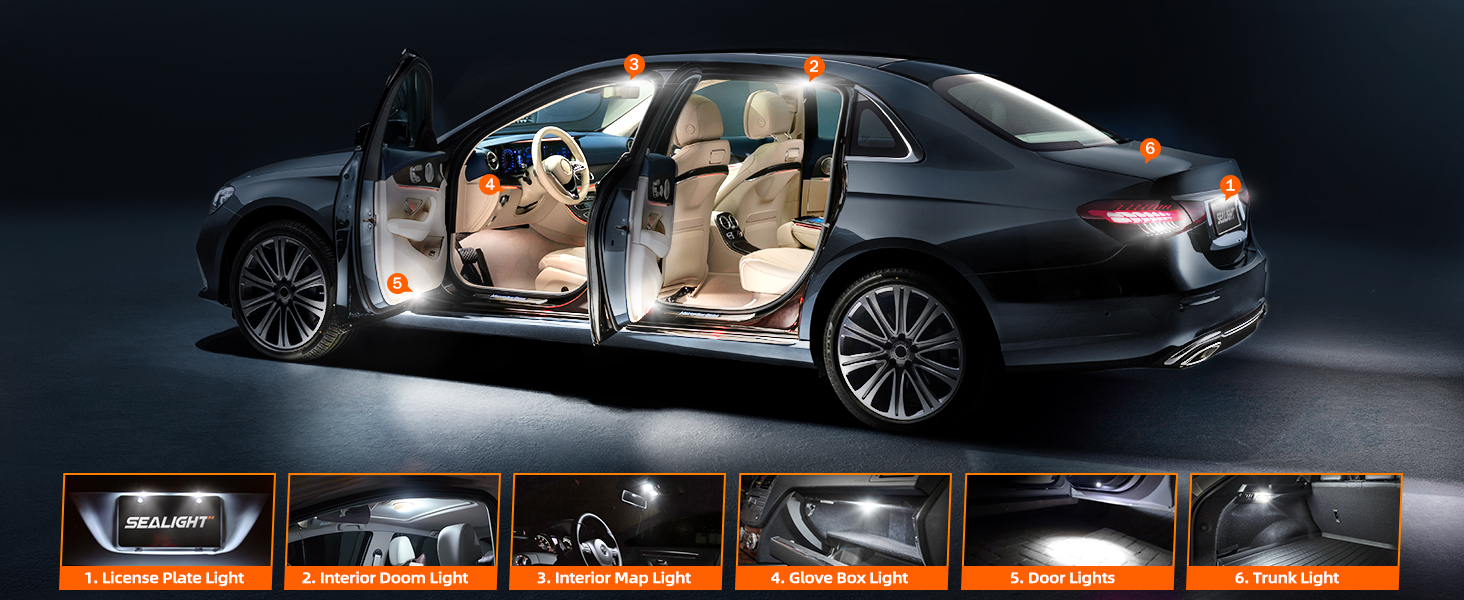
Comparison Table: 168 vs 194 vs T10 vs W5W Automotive Wedge Bulbs
| Feature | 168 Bulb | 194 Bulb | T10 Bulb | W5W Bulb |
| Type / Shape | Incandescent | Incandescent | Tubular bulb (T-series design) | Incandescent (ECE standard) |
| Base Type | W2.1×9.5d (wedge base) | W2.1×9.5d (wedge base) | W2.1×9.5d (size designation) | W2.1×9.5d |
| Wattage | 4.9W | 3.8W | Varies — umbrella term for 168, 194, etc. | 5W |
| Brightness (Candlepower) | ~3 CP | ~2 CP | Depends on model | ~3 CP |
| Voltage | 12V | 12V | 12V | 12V |
| Filament Design | Two internal wires (adjusts brightness) | Single wire (fixed brightness) | Not specific — varies per bulb | Usually single filament |
| Common Applications | Interior lights, markers, license plates | Interior lights, dash, glovebox | General term for 168/194 bulbs | Side markers, license plates, dome, parking lights |
| Lifespan | Shorter (brighter, hotter) | Longer (slightly dimmer) | Varies based on bulb type | Comparable to 168 |
| Interchangeability | Often interchangeable with 194/W5W (check brightness) | Often interchangeable with 168/W5W (check brightness) | Refers to wedge size, compatible with 168/194/W5W | Often interchangeable with 168/194 |
| Region/Standard | US (SAE designation) | US (SAE designation) | Size classification (not regional) | European (ECE) naming standard |
| LED Availability | Yes | Yes | Yes | Yes |
Further Reading: What About T15 Bulbs?
A T15 bulb is a wedge-base light bulb that’s physically larger and brighter than the more common T10. Though they share a similar base, T15 bulbs are designed for applications that require higher light output like reverse lights or exterior marker lights. Therefore, T15 and T10 are not interchangeable.
T15 bulbs are often cross-listed with part numbers such as 921, 912, W16W, 906, and 922.
Example T15 Bulbs You Can Buy:
Conclusion
T10, 194, 168, W5W, and other wedge base bulbs may seem confusing, but they share many similarities. With the right socket base, they are often interchangeable regardless of part number. Choosing the highest quality and wattage LED replacement maximizes light output. Just be sure to get the proper physical size bulb for your vehicle's specific application. Follow your owner's manual or check the socket if unsure.
Read More:
- 168 vs 194 Bulbs: Key Differences & How to Choose the Right One
- H7 vs H11: Difference Explained & Pick the Right Bulb
- H11 vs H8 vs H9 vs H16 Bulbs: Differences & How to Choose the Right One
- 1156 vs. 1157 Bulbs Explained: Compatibility, Brightness & More
- T15 vs. 921 vs. 912 Explained: Everything You Need to Know
- H11 vs. 9005 Bulbs: What Are the Differences Between Them



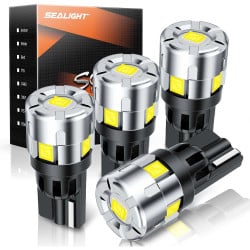
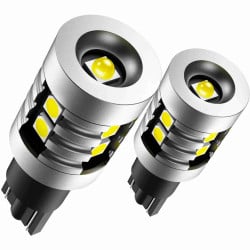

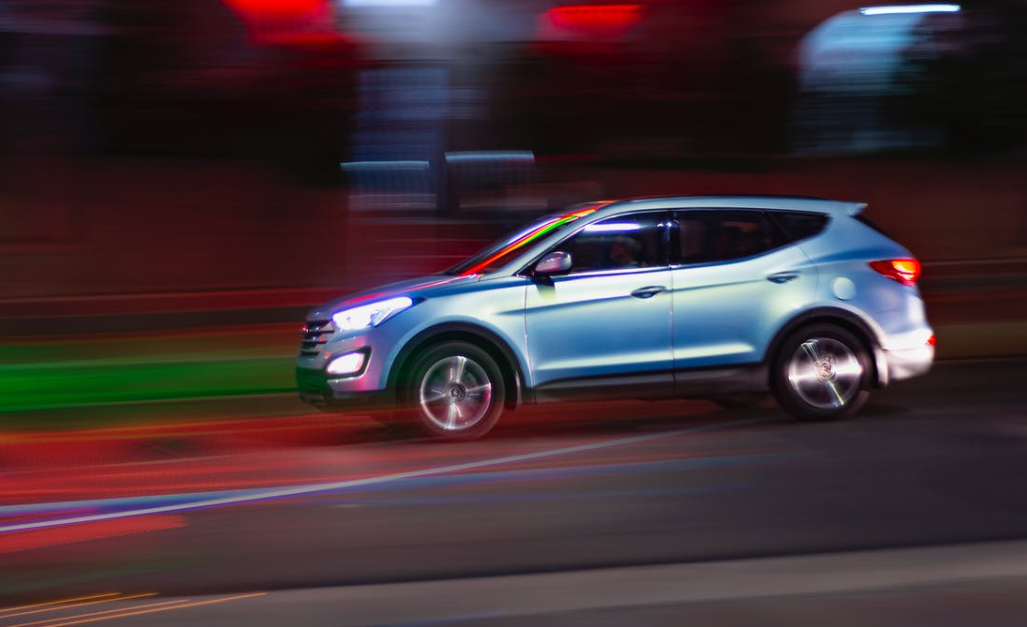

Leave a comment